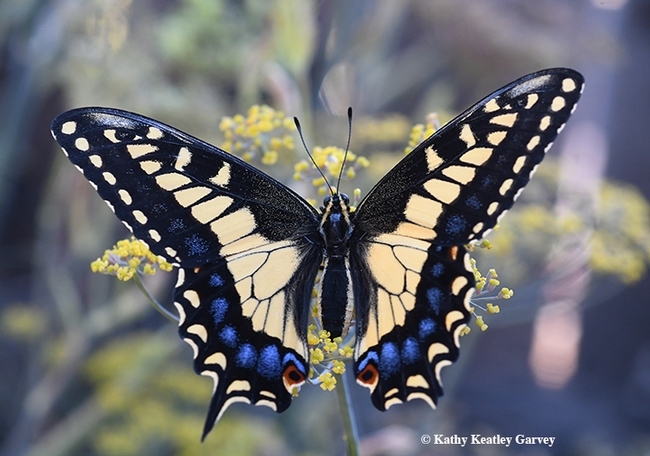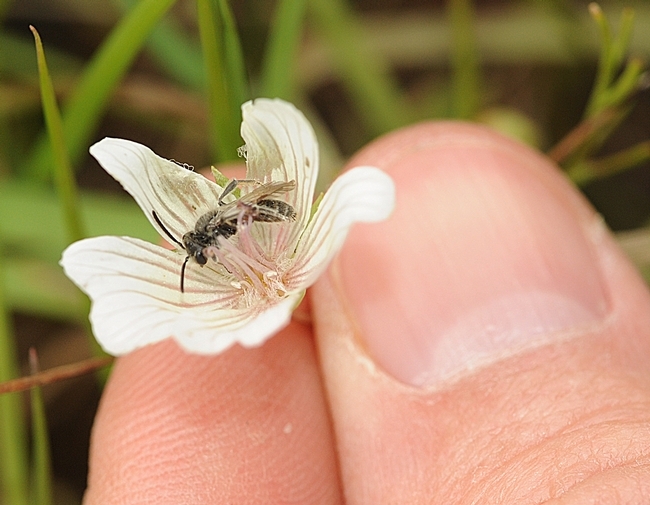- Author: Denise Godbout-Avant
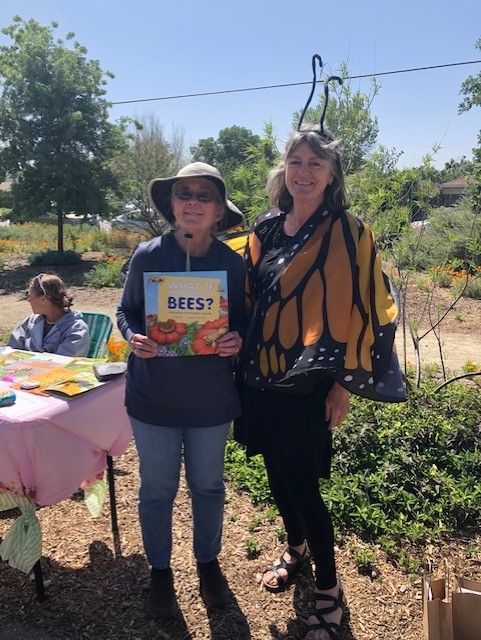
My teacher commented the deadline for doing the assignment was coming up and I wouldn't get an ‘A' in English if I didn't complete the project. I responded I didn't know of any science books to read. He suggested I go to the school library.
I told the librarian of my situation and she guided me to a book about honeybees. I liked bees (though I'd been stung once!) but knew little about them other than they spent time around flowers. That book revealed the complex and fascinating world of honeybees to me. I was enthralled. I have been enamored with bees and science ever since. I eventually obtained degrees in science and education which led to a worthwhile career that included being a biology instructor, museum educator and lab technician. All because of a book on bees. . .I am forever grateful to my 6th grade teacher and the school librarian.
All About Bees Talk
As a Stanislaus County Master Gardener, I have the privilege of joining fellow Master Gardener Heidi Aufdermaur in presenting a talk on “All About Bees,” to share my love of bees. Learn why they're so valuable, different kinds of bees, (there are over 1,600 native bees in California!), their life stages and habits, why they're in trouble, and how home gardeners can help bees thrive. I hope you'll join us!
When: Tuesday, April 26, 2021, 6:00-7:30 p.m.
Where: Harvest Hall Rooms D & E at the Agricultural Center at the corner of Crows Landing and Service Road in Modesto
Address: 3800 Cornucopia Way, Modesto, CA 95358
Cost: Free
Instructors: Master Gardeners Heidi Aufdermaur and Denise Godbout-Avant
Questions: call (209) 525-6862
Sign Up online: http://ucanr.edu/bees/2022
Denise Godbout-Avant has been a Stanislaus County Master Gardener since 2020.
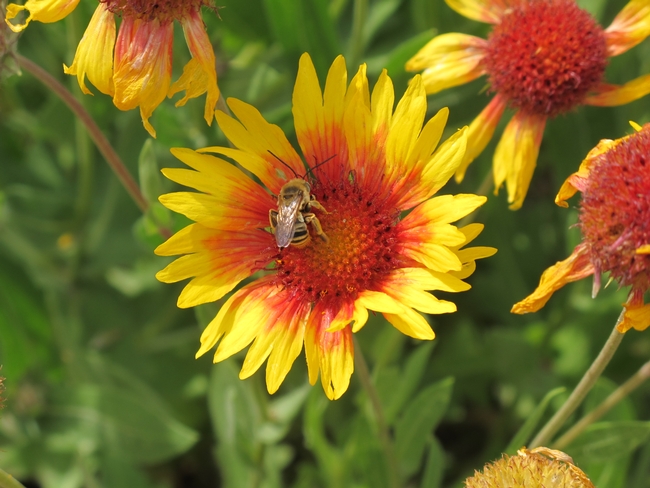
When: Tuesday, April 26, 2021 6:00-7:30 p.m.
Where: Harvest Hall Rooms D& E at the Agricultural Center at the corner of Crows Landing and Service Road in Modesto.
Address: 3800 Cornucopia Way, Modesto, CA 95358.
Cost: Free
Instructors: Master Gardeners Heidi Aufdermaur and Denise Godbout-Avant
Questions: call (209) 525-6862
Sign Up online: http://ucanr.edu/bees/2022
- Author: Denise Godbout-Avant
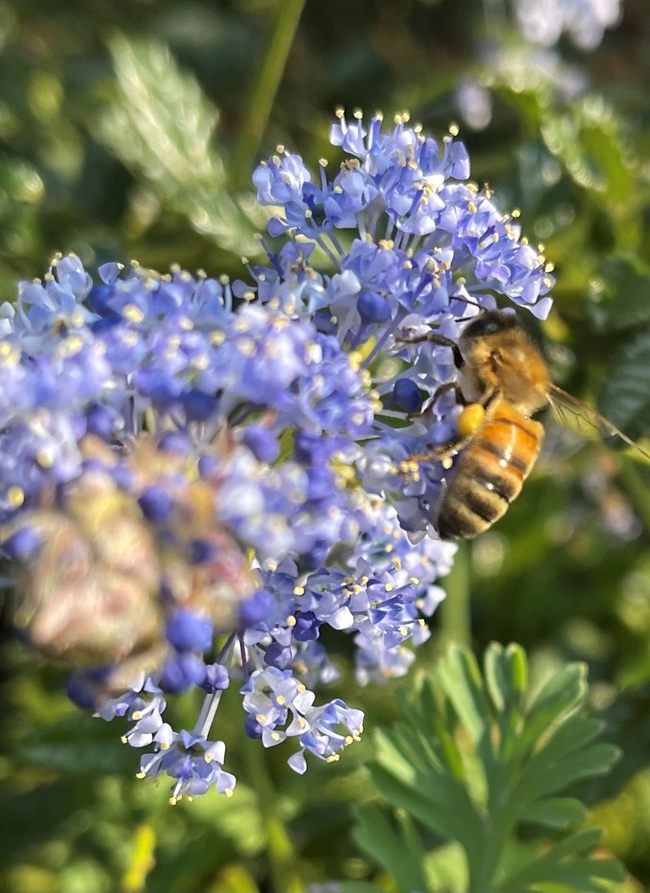
Honey Bees
Honey bees (Apis mellifera) do not hibernate during the winter. During cold days honey bees cluster around their queen to provide her with warmth and feed on their stockpile of nectar. However, when the temperature rises to 55°F (13°C) or higher, worker bees will leave the hive to forage for pollen.
Native Bees: Bumble Bees & Solitary Bees
Unlike honey bees, most bees live underground. Some “early bird” native bee species emerge from their overwintering sites earlier than others. These include black-tip bumble bee (Bombus melanopygus) and yellow-faced bumble bee (Bombus vosnesenskii). Some solitary bees such as mining bees (Adrena) and digger bees (Habropoda) will also appear in the winter.
Plants that Bloom in February
Here, in California's Central Valley, it is not unusual to have some warmer sunny days in the midst of winter. Home gardeners who wish to have gardens that are attractive to bees can provide them with a diversity of plants which bloom during different seasons, including plants that bloom in the winter when flowers can be scarce. By doing this, the gardener ensures there is always a source of pollen for local bees to collect, no matter what time of year it is.
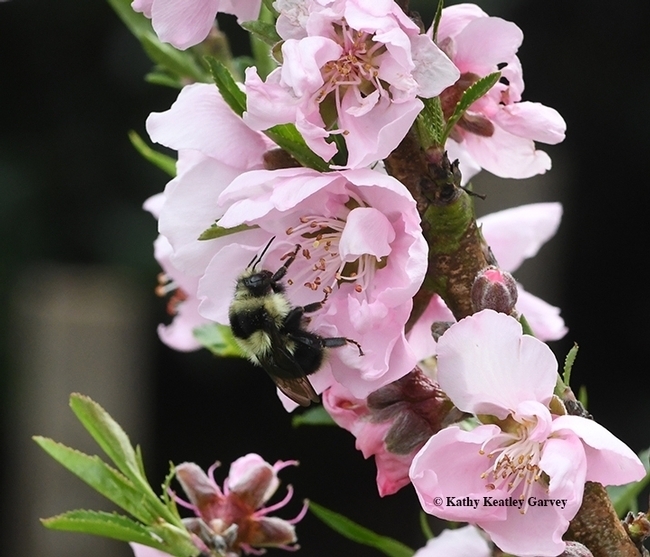
- California Wild Lilac – Ceanothus is an evergreen bush that can turn many Western hills blue in the winter. There are several varieties for home gardeners to choose from including the following:
o Ceanothus griseus horizontalis – Yankee Point ceanothus: A ground cover with light blue flower clusters in winter and spring.
o C. thyrsiflorus – Blueblossom ceanothus: A popular landscaping choice, it varies in height from 2-3 ft. to 25 ft. or more with flowers that range from light to dark blue which bloom in winter and spring.
o C. rigidus ‘Snowball' – White Monterey lilac: As the name suggests, unlike many Ceanothus, this 3-5 ft. tall and wide bush produces white flowers in the fall and winter.
o C.maritimus ‘Valley Violet” – Santa Barbara ceanothus: At 2 ft. tall x 4 ft. wide, this smaller, tough, reliable plant has lovely dark-violet flowers. It was named one of UC Davis Arboretum's 100 top “All-Star” plants.
- Lavandula angustifiola – English lavender: This variety of sweetly fragrant lavender is more tolerant to cold and frost and will bloom throughout the summer and winter if dead blossoms are removed regularly. Ranging from 8 in. to 2ft. width and height, there are many selections to choose from in various shades of lavender-blue, pink or white.
- Manzanita are evergreen bushes native to the far West and need little to moderate water once established. All have small urn-shaped flowers, typically blooming in late winter or early spring followed by red or brown berries that are attractive to birds.
o Arctostaphylos manzanita – Native to California, this bush can get to 7 x 7 ft. with pink flowers.
o A. pajaroennsis – Grows 3-8 ft. tall, 10-12 ft. wide. Pink and white flowers bloom a long time.
- Peritoma arborea – Bladderpod: This drought-tolerate evergreen California native bush, also known as spiderflower, grows 3-6 ft. tall with a 2-3 ft. spread. Showy yellow flowers bloom in late winter through early spring. Easy to grow, they self-seed.
- Cersis occidentalis – Western Redbud: This deciduous tree can grow to 10-18 ft. tall and wide with handsome heart-shaped dark green leaves. Magneta flowers can begin blooming in February in warmer areas.
- Eschscholzia californica – California Golden poppy: California's native flower, some start blooming in the winter and often continue throughout the summer into early autumn. The satiny four-petaled flowers vary from yellow to lighter or darker shades of orange. These 12-inch high plants reseed themselves.
- Hardenbergia violacea - Lilac Vine: Native to Australia, these have twining stems which need support, with evergreen foliage, and clusters of sweet-pea shaped violet, rose or pinkish-purple flowers which provide color to the winter garden. They grow up to 10 ft.
For Valentine's Day Plant a Winter-Blooming Plant
Bees are in decline due to many factors, including pesticide use, urbanization, and Climate Change. When selecting plants for your garden this year, consider placing some winter-blooming, bee-friendly plants in your landscape this Valentine's Day. You'll be providing both native and honey bees with sources of nectar during a time of year when flowers are scarce and adding some color to your winter garden!
If you have flowers blooming right now, we want to hear from you! Please post your favorite February bloomers in the comments below.
Sources and Additional Information:
Sunset Western Garden Book. 2012 Printing
Piedmont Master Gardeners – The Garden Shed Newsletter, August 2019. The Bees In Your Backyard.
https://ucanr.edu/blogs/blogcore/postdetail.cfm?postnum=27237
UCCE Master Gardeners of San Bernadino, May 23, 2018. Getting to Know Our Native Bees.
https://ucanr.edu/blogs/blogcore/postdetail.cfm?postnum=27237
UC Davis Arboretum and Public Garden. Learn More About California Native Bees.
https://arboretum.sf.ucdavis.edu/blog/beyond-honey-bee-learn-more-about-california-native-bees
UC Davis Arboretum and Public Garden. Arboretum All-Stars. https://arboretum.ucdavis.edu/arboretum-all-stars
Xerces Society for Invertebrate Conservation Blog, 27 December 2019.
Insect Apocalypse? What Is Really Happening; Why It Matters; And How We All Can Help.
Denise Godbout-Avant has been a Stanislaus County Master Gardener since 2020.
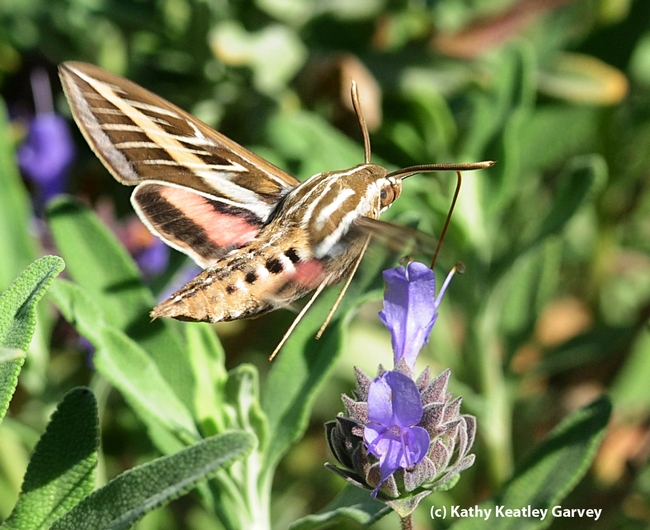
Native (Bee) Pollinators
Take a quiz on your knowledge of native bee pollinators, learn about the three types of pollinator nesting, and see examples of what types of plants pollinators prefer. https://www.youtube.com/watch?v=JOGDSNJJoh8&t=6s
Planting for Pollinators
Learn about the local native bee pollinators and hummingbirds you might see in your backyard, and what kind of plants they prefer. https://www.youtube.com/watch?v=naL3BM5aP-s&t=5s
Butterflies in Your Garden
Find out how to have more butterflies in your garden, by learning which plants are required for butterflies to complete their lifecycle. https://www.youtube.com/watch?v=zHXSdtxicII&t=6s
Follow Along
Download the handouts from any of our classes by visiting our Classes and Workshops web page at https://ucanr.edu/sites/stancountymg/Classes/
This post was originally published on June 24, 2021.
- Author: Heidi Aufdermaur
About 75% of all flowering plants rely on animal pollinators. Most pollinators (about 200,000 species) are beneficial insects such as honey bees, native bees, butterflies, moths, flies and beetles. As the saying goes, if you build it, they will come. So what are some ways in which gardens can be made more attractive for the pollinators of all kinds?
First, know the pollinators. Everyone knows the European honey bee, which was imported 400 years ago and brought to California around 1850. But did you know there are over 4,000 species of native bees in the United States, of which 1600 are found in California?
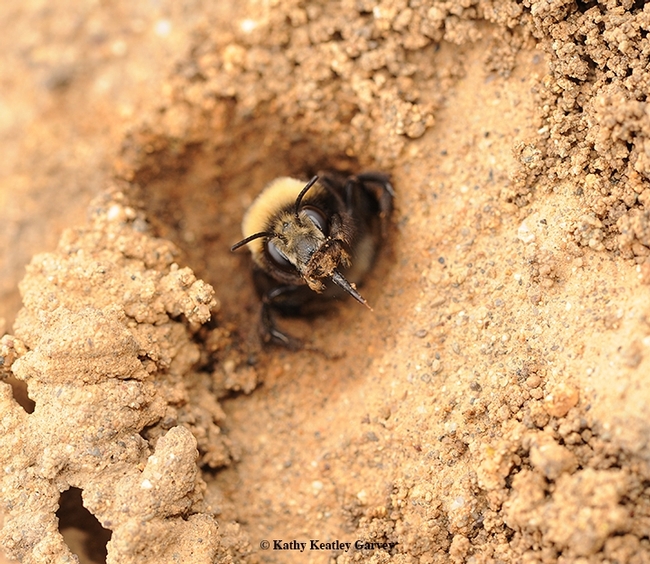
Approximately 70% of native bees are solitary ground nesters, while 30% are cavity nesters. As well as providing pollinator-friendly plants to your yard, help ground nesting bees make their homes in your garden, by leaving a sunny area mulch-free. For cavity nesting bees, provide artificial nest sites, which are easy to construct or purchase from commercial outlets.
Hummingbirds, with their long beaks and tongues draw nectar from tubular flowers. Pollen is carried on both the beaks and feathers. To attract these fun loving birds to your garden, be sure to include bright colored tubular flowers in your landscape.
Butterflies are eye-catching, as are the flowers that attract them. Not only are specific flowers important, but also providing open areas such as bare earth and large stones where butterflies may bask and moist soil from which they may get needed minerals. To support butterflies, a gardener may also be willing to accept slight damage to host plants that provide food for the larval stage of the butterfly.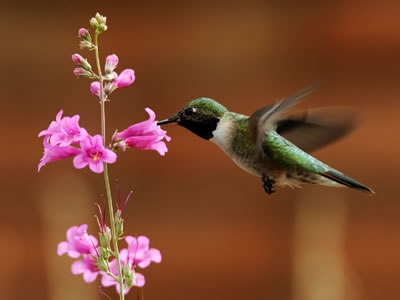
Moths are mostly evening fliers attracted to flowers that are strongly sweet smelling, open in late afternoon or night, and are typically white or pale in color. Moths are easy to differentiate from butterflies if you look at their antennae; moths do not have a swelling at the end of their antennae whereas butterflies do.
Bats are nocturnal pollinators that play an important role in the pollination of agaves and cacti in the Southwest, however not necessarily in our specific region. Bats are usually found visiting light-colored flowers that open at night and often produce copious amounts of pollen and nectar.
Flies are not typically thought of as pollinators, however, many masquerade as bees in the garden. Syrphid flies, also called hover flies, are considered to be very important pollinators in agriculture.
Over 30,000 species of beetles are found in the United States, they may not be efficient pollinators but they do play a role as they visit flowers to sip nectar or feed on the flower parts. This activity may result in pollination. Some have a bad reputation because they damaging plants.
If you haven't seen it yet, please watch our YouTube video, Native Pollinators, to learn about different kinds of bees you may find in your garden.
National Pollinator Week is a campaign by the Pollinator Partnership.
Helpful Resources
How to Attract and Maintain Pollinators in Your Garden. Free ANR Publication 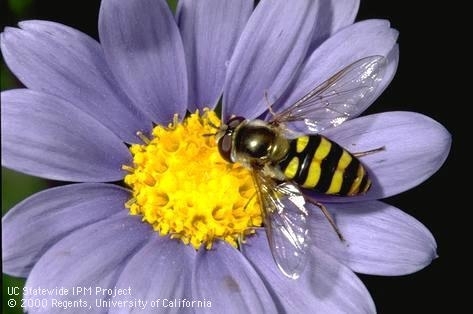
Build Bee Houses. Free publication from Michigan State University.
US Forest Service: Pollinators
Heidi Aufdermaur is a graduate of the 2019 Class of Master Gardeners in Stanislaus County.
